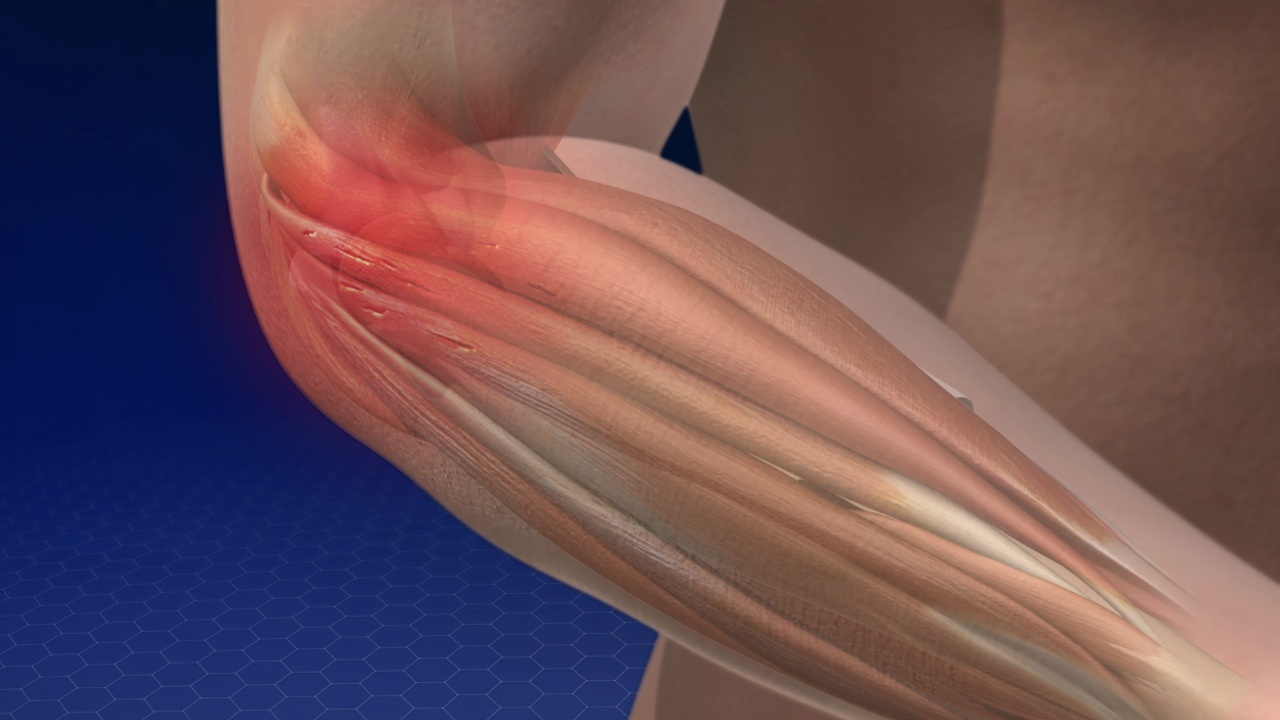Tennis elbow, also known as lateral epicondylitis, is a common ailment that causes discomfort and sensitivity around the elbow's common extensor origin due to a degenerative change within these tendons.
Tennis elbow is more frequent in the dominant arm and is estimated to affect 1-3 % of the adult population every year. Although it can happen as an acute injury (trauma to the lateral elbow), it is typically seen as an overuse injury requiring repetitive wrist extension against resistance.
Usually, people can experience symptoms up to 50% of the time for a variety of reasons, such as using a heavy tool or having a poor swing while playing tennis. It can also be observed in workers who use heavy equipment or do repeat grasping or lifting tasks.
In the course of weeks or months, Symptoms Of Tennis Elbow begin to manifest over time and then gradually become worse.
Also Read - Best Doctor For Frozen Shoulder
What Are The Symptoms Of Tennis Elbow?
If you have tennis elbow, you may encounter any of the following signs:
- Modest at initially then steadily getting worse elbow ache.
- The outside of the elbow, as well as the forearm and wrist, are all in pain.
- A feeble grasp.
- Severe pain while squeezing an object or when shaking hands.
- Difficulty in using tools, lifting objects, or opening jars.
Treatment for your Symptoms Of Tennis Elbow
There are over 40 tennis elbow treatments that have been reported, and because so many of them are used often, there is obviously no single best treatment, as treatment varies with the grade of injury. Expert opinion often endorses well-established tennis elbow treatments. These include medications such as NSAIDS, exercise/physiotherapy treatment, platelet-rich plasma injections (PRP), orthotics and laser for this you can consult the Best Physiotherapist In India.
A doctor should always be consulted before beginning an exercise regimen and for tennis elbow cure. A thorough assessment is essential to rule out any significant damage, such as the rupture of a tendon tear.
Activities can aggravate the issue, so wait until the inflammation has subsided before starting any. If discomfort still exists, take a break, ice your forearm and elbow, and consult a physical therapist to make sure you are performing the tennis elbow exercises properly. Often, altering your daily routine can help symptoms subside.
Therefore, if you are experiencing a similar issue, you may always get in touch with JIPSI. You can get assistance from our specialist, Dr. Gaurav Kant Sharma to figure out what activities might be making you uncomfortable.
What Can Be Done To Prevent Tennis Elbow?
Tennis elbow can be avoided in a variety of ways, like:
- Make sure you're utilizing the appropriate tools and methods for each sport or activity.
- Exercise the forearm to preserve its flexibility and strength.
- Cool your elbow after vigorous exercise.
- If bending or straightening your arm hurts, rest your elbow.
Tennis elbow can be avoided or prevented from recurring if you follow these instructions and avoid straining your elbow's tendons.
Tennis Elbow Tests
The lateral epicondyle is the name given to the bony outgrowth on the outside of your elbow. Tennis elbow may be present if you feel any pain, soreness, or discomfort in this region when undergoing any of these examinations.
To do these tests, use the arm that is afflicted. You can carry out each test on both sides if you wish to experience the differences between your arms.
- Palpating
- Sit with your forearm resting on a table in front of you.
- Examine your lateral epicondyle and the region above it by gently applying pressure.
- Keep track of any sensitive, sore, or painful locations.
- Coffee Cup Test
For this test, simply assess your degree of discomfort when you hold a cup of coffee or a carton of milk.
- Resistance
- Your injured arm should be straight out in front of you, palm down.
- Your opposing hand should be placed on the back of your outstretched hand.
- Try to bend the wrist of your bottom hand by pressing your top hand into it.
- By pushing the upper hand against the lower one, resistance is created.
- Middle Finger Resistance
- With your palm facing up, extend the afflicted arm straight out in front of you.
- Pull your middle finger back toward your forearm with your opposing hand.
- Use your middle finger to counteract this motion at the same time.
- Next, flip your palm so that it is facing down.
- Press your middle finger down while resisting the urge to move it.
- Chair Pickup Test
For this test, you'll need a lightweight chair with a high back.
- Place a chair in front of you as you stand.
- Straighten the afflicted arm out in front of you.
- Your wrist should bend so that your fingers point down.
- Take hold of the chair's back and raise it using your thumb, first finger, and middle finger.
- As you lift the chair, keep your arm straight.
Conclusion
You can perform these techniques to build up the forearm muscles and improve function if you've previously experienced an elbow injury or are currently recuperating from one. You might be able to prevent this issue in the future by strengthening your muscles and avoiding repetitive motions.





